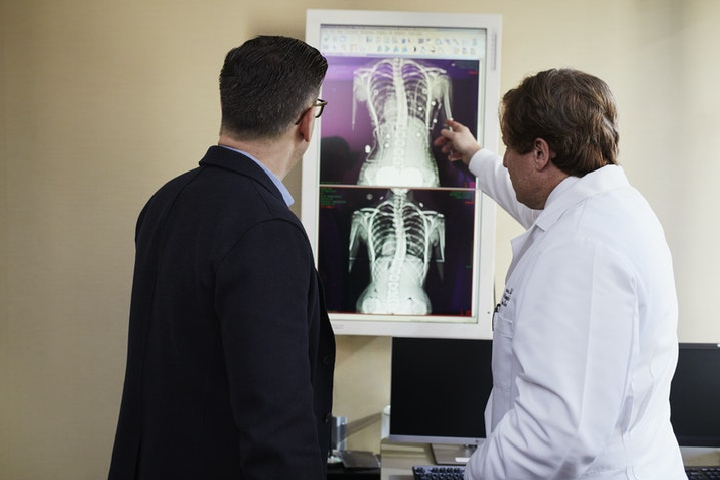Osteoporosis is a “silent” disease that gradually weakens your bones and affects women, above all. It does not usually give signs until there is a bone fracture, so it is important to do tests before this occurs.
Did you know that 1 in 3 women over 50 will suffer an osteoporosis fracture? And that the number of breaches per year due to this disease exceeds the sum of cases of heart attacks, breast cancer, and stroke together? These data give a clear idea of how much this pathology affects.
And is that from the age of 40 begins a slow and progressive loss of bone mass that accelerates after menopause?
The problem is that it is a process that does not cause symptoms, does not hurt, and many times you do not notice until the first fracture occurs.
1. Why the Bones Weaken
Like skin cells, bone is a “living tissue” that is continually being removed and renewed, keeping the skeleton secure.
- Until the age of 30-35, more bone is built than is lost.
- From the age of 40, the destruction goes beyond construction, and there is a gradual loss of bone mass.
In healthy bone, every 2 to 3 months, the bone tissue becomes old, and “renewal” begins. Two types of cells are involved in this process:
- Osteoclasts, which stick to the bone and eat their old mass, forming channels.
- The osteoblasts, which then arrive to fill the gap that has been left.
These cells create new bone mass, and the bone is completely remodeled.
The supply of calcium and vitamin D are essential for bones to regenerate
If that process fails repeatedly, the bone becomes porous. This can occur if the “destroying” cells remove more bone mass than necessary, or the bone-building cells fail to form the right amount of new “filler.”
- As more bone is destroyed than is created, “holes” are formed inside it, osteoporosis.
2. Women Are More at Risk
- On the one hand, from the constitutional point of view, women develop less bone than men throughout their lives, which means that they are more at risk of suffering from it.
Women develop less bone during their lives than men.
- But the main reason is the arrival of menopause since with it the estrogen level drops sharply. And this hormone is key to proper bone formation. That is why postmenopausal women are the leading candidates to suffer it.
3. How to Prevent Osteoporosis
How can you avoid suffering osteoporosis?
First, starting to take care of your bones from today, ensuring the necessary supply of calcium and vitamin D, exercising, and leaving habits such as tobacco and alcohol.

And secondly, going to the doctor if you are at risk of suffering it: simple densitometry is enough to diagnose it. With the appropriate treatment, the risk of fracture can be reduced by up to 50%.
4. Osteopenia First
Although indeed, the disorder is usually detected, especially from the age of 50, it must be borne in mind that it does not come suddenly, but that it practically always goes through a stage of less calcium in the bones, osteopenia, which gradually evolves towards osteoporosis.
Osteoporosis doesn’t hurt, and you may not feel anything until the first fracture.
Detecting that a slight drop in calcium is essential to take action on time and reverse the problem.
5. When to Go to the Doctor?
Since bone loss is symptom-free and painless, it is common to know when the fracture occurs, but should we wait for that extreme? Experts recommend women go to the specialist to find out the health of their bones. Make an appointment with your doctor.
- If you have passed menopause, from this stage is when there is more risk, since, in the five years after menopause, a woman can lose 15% of her bone mass.
- Suppose you have suffered a fragility fracture. Do not overlook it because it could be osteoporosis.
- Suppose you suffer from kidney failure, hyperthyroidism, or rheumatoid arthritis. Although it is common for it to occur in postmenopausal women, these disorders can also cause osteopenia and then osteoporosis.
Depending on your risk factors (your age, your family history, your medical history or your life habits), the doctor may suggest you carry out densitometry, which helps to know how your bones are.
Both your gynecologist and your GP can refer you to the rheumatologist to do it if necessary.
Think that if you have thyroid problems, you have diabetes, or you take corticosteroids or anticoagulants, you may be more prone to lose bone mass. Suffering from heartburn, suffering from kidney disease, or having intestinal problems are also risk factors.
6. How is Densitometry Done?
It is an imaging test that serves to objectively “measure” how much calcium is in your bones. The hips or spine image can be obtained (central densitometric), although it can also be done on the wrist, or even on the fingers or heel (peripheral).
The apparatus used to measure bone density uses X-rays, but there is no risk with such low irradiation.

The obtained values are compared with the average cost of people of the same age and sex, and this allows determining the degree of osteoporosis and the risk of bills.
Densitometry objectively measures how much calcium is in your bones.
It is a painless test that can last between 10 and 30 minutes, depending on the equipment used and the body’s parts explored.
7. Results and Treatment
The possible loss of bone mass is measured in a scale between 0 and -3.5:
- Standard: If the test results are higher than -1, it is indicative that your bones are in good health.
- Osteopenia: A density between -1.5 and -2.5 indicates that you have lost bone mass, but it is not osteoporosis. In this case, the specialist does not usually recommend medication unless you have risk factors. You can prescribe calcium and vitamin D supplements.
- Osteoporosis: You suffer if the mineral density reflected by the densitometry is less than -2.5. The recommended medication depends on which bones are weaker. X-rays are required to determine this.
In addition to taking general measures (calcium-rich diet, physical exercise, not smoking or drinking ), if a treatment is to be applied, antiresorptive drugs are usually used first, which prevent bone destruction.
In recent years, new drugs have been introduced that, in addition to being useful, are more convenient to administer (every six months subcutaneously).
There are two types of drugs: those that prevent destruction and those that help build bone.
And when the risk of fracture is very high, there are outperforming drugs that are administered daily. Regardless of the treatment, compliance is critical: 50% do not follow it one year after diagnosis.
8. Latest Advances in Research
The mechanisms of action between osteoblasts (bone-generating cells) and osteoclasts (bone-destroying) are becoming increasingly well known.
New, more effective drugs are being studied that stimulate bone creation and slow down destruction. Genes associated with osteoporosis have also been identified, opening the way for new treatments.

